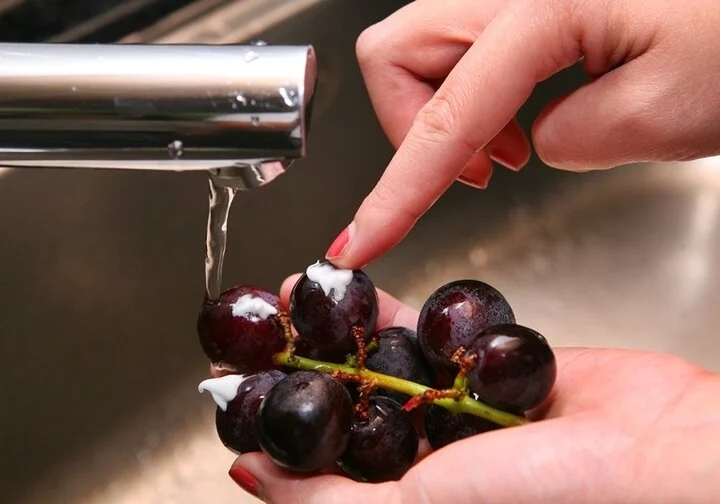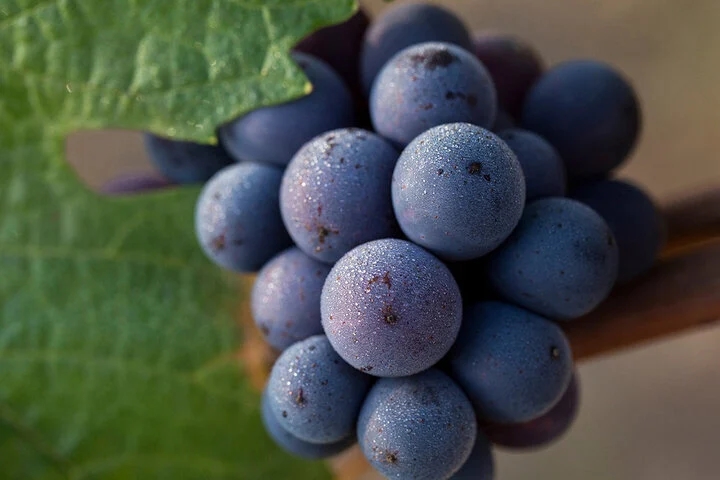Grapes are a nutritious fruit with anti-aging properties, often gracing the tables of many families. However, cleaning them can be a tedious task.
Grapes have thin skins that are easily damaged during washing, and the fruits can also fall off and get bruised. This toothpaste washing tip will help you get perfectly clean grapes while keeping them intact and shiny, ensuring both aesthetic and hygienic standards.
Toothpaste Grape Washing Tip
The thin skin of grapes can be challenging to clean with plain water. Toothpaste contains tiny “sand-like” particles that create friction and help remove any dirt or residue effectively. Rest assured that the grapes will not retain any toothpaste flavor after washing.
Method: Place the grapes in a sink or basin and add enough water to submerge them. Squeeze a small amount of toothpaste into your hand, rub your hands together, and then gently massage the grapes with moderate pressure (no need to squeeze). Then, lift the grapes out of the water and place them in a colander. Rinse them under running water. After a thorough rinse, the grapes will be clean and shiny, resembling crystal orbs.

Toothpaste washing tip for grapes, ensuring cleanliness without leaving any scent. (Photo: Free Times)
How to Select Fresh Grapes
When choosing grapes, pay attention to the stems, shape, and color. A fresh bunch of grapes will have a powdery coating on the outside.
Look for plump or sparsely packed grapes with evenly sized fruits that are not too large. The ideal grapes should be slightly soft and have a smooth, glossy appearance, free from bruising or damage. Avoid buying grapes that are overly soft or show signs of spotting, as these may be infested or chemically treated.
Examine the stems; opt for bunches with fresh, green stems, indicating recently harvested grapes. The grapes will be firm, smooth, and shiny. Older grapes will have brown or blackened stems, and the area where the stem meets the fruit may also show signs of discoloration.
Bunches with wilted stems but fresh-looking grapes or vice versa may have been treated with preservatives, so it’s best to avoid them.
Color is another important factor. Different grape varieties come in colors like green, red, and purple. Regardless of the variety, choose grapes with a natural, vibrant color, a glossy skin, and a powdery coating, indicating their freshness.

Fresh grapes exhibit a vibrant color, plump fruit, and a powdery coating, indicating they are recently picked. (Photo: Thompson 31Fifty Wines)
Grape Storage Tips
When you get home, cut off any damaged grapes and separate them into smaller clusters. Place each cluster in a separate bag and store them in the refrigerator’s crisper drawer. This method will help keep the grapes fresh for longer, preventing them from ripening too quickly.
Do not wash the grapes before storing them, as this will accelerate spoilage.
Once you take the grapes out of the refrigerator, try to consume them within three days. After being removed from cold storage, grapes will start to lose moisture and wither. Additionally, leaving them out for extended periods will affect their freshness and quality.
According to VTC News






























